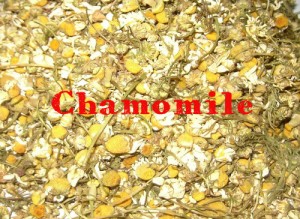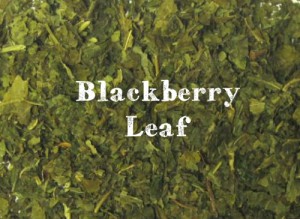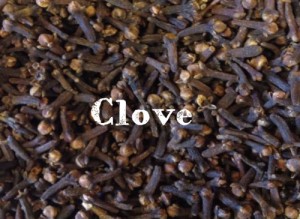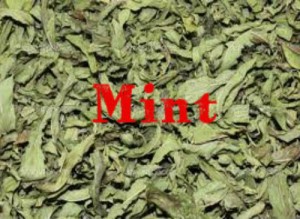
Let's Start with our namesake--HIBISCUS
Whether you are lucky enough to grow your own tea herbs, you purchase loose teas, or you use tea bags, your cabinet is not complete without the following ingredients. These teas are delicious and beneficial, with many different healing qualities. Considering that we most often turn to herbal teas for healing purposes, it’s especially important to purchase or grow organic herbs for this purpose. If your leaves are bathed in pesticide and then you add them to boiling water, instead of healing goodness, you are steeping toxins.
When making tea for medicinal purposes, be sure to steep the tea in a teapot with a lid, or to cover your mug while the herbs are steeping. This helps to make a more potent brew by keeping all of the healing oils in the tea, instead of allowing them to drift into the room. Most herbs should be steeped for about 10 minutes for maximum results.
There are many different herbs from around the world that have wonderful healing properties. I’ve concentrated this list on ones that can either be easily acquired and stored, or ones that can be easily grown in a backyard garden or a sunny window. Just like band-aids, antibiotic cream, or aspirin, these items are vital additions to your pantry, allowing you to dispense a hot, steaming, fragrant cup of nurturing in as little time as it takes you to boil water. Be prepared by keeping the following ingredients close at hand, and be self-sufficient by producing for yourself as many as possible (always the best way to make sure that the items were grown using safe, organic methods).
Hibiscus
Cholesterol maintenance
In 2007, a one-month clinical trial tested the effects of hibiscus extract on cholesterol levels. A total of 42 subjects were randomized to three groups for the study. Group 1 received one 500-mg capsule 3x daily (1,500 mg/day), Group 2 received two capsules 3x daily (3,000 mg/day), and Group 3 received three capsules 3x daily (4,500 mg/day). Interestingly, by the fourth week, participants in both Groups 1 and 2, but not Group 3, experienced a cholesterol maintenance effect. The optimum dose was 1,000 mg taken 3x daily.
In 2009, another trial studied hibiscus’s ability to support cholesterol maintenance, this time in people concerned with healthy blood sugar levels. Sixty subjects, mostly women, were given either one cup of hibiscus tea or black tea twice per day. After one month, hibiscus was able to help maintain total, LDL, and HDL cholesterol levels — as well as triglycerides — already within a healthy range.* Black tea, on the other hand, only impacted HDL levels.
A larger trial, in 222 adults, was published on hibiscus in 2010. The subjects — about a third of whom had metabolic challenges — were randomly assigned to one of three groups: a healthy diet, hibiscus, or a healthy diet plus hibiscus. Those with metabolic challenges experienced several benefits from hibiscus, including cholesterol maintenance.¤ Similar effects on supporting normal blood sugar were also noted.*
Another 2010 study in 69 subjects found that hibiscus extract (1,000 mg/day) did not have a cholesterol maintenance effect compared to placebo. One wonders why the results of this study were negative, while the three studies mentioned above showed positive results. It could be because different preparations — tea, powdered flowers, and various extracts — were used in each study. With more consistent product selection and dosages used in larger randomized trials, we would hope that this would clarify the best intervention to use.
Blood pressure maintenance
In 2007, a randomized, controlled, double-blind study researched hibiscus’s blood pressure maintenance capacity. Participants received either a dried powdered hibiscus extract, containing a total of 250 mg anthocyanins, or an alternate intervention. Hibiscus extract was able to maintain blood pressure levels already within a healthy range, but importantly, it did not alter blood potassium levels, nor did it affect salt-water balance.*
A trial comparing hibiscus to black tea among people seeking to support healthy blood sugar levels was published in 2009. Subjects were randomly assigned to drink one cup of hibiscus tea or black tea two times per day for one month. Hibiscus tea demonstrated a maintenance effect on systolic (but not diastolic) blood pressure, while black tea did not.*†
A Cochrane review of hibiscus’s effects on blood pressure published in 2010 resulted in five articles. The reviewers included randomized controlled trials of three to 12 weeks in duration that compared hibiscus to either placebo or no intervention at all. All five of these studies found hibiscus had a blood pressure maintenance effect.†
Safety and Dosage
The safety profile of hibiscus is excellent, with no proven adverse reactions.
It is difficult to clarify dosing recommendations when different products are used in different studies. However, positive studies used the following dosages:
• For cholesterol maintenance: 1,000 mg dried herb 3x daily, one cup of hibiscus tea 2x daily, or 100 mg of standardized extract 2x daily
• For blood pressure maintenance†: One cup of hibiscus tea 2x daily or dried powdered hibiscus extract providing 250 mg anthocyanins per day
• 2 Hibiscus Liquid Phyto-Caps are the equivalent of an 8oz cup of Hibiscus Tea.
It is exciting to see the use of this simple, safe plant evolve from home beverage to medicinal utilization for such common health support such as blood pressure and cholesterol maintenance.
Hibiscus helps maintain cholesterol levels that are already within a healthy range.
-- Tori Hudson, N.D.
Mint
Mint tea is the classic herbal tea. Mint is an ingredient in many different commercial tea blends and is much-loved for its refreshing fragrance.
Growing it:
Mint is an herb that doesn’t just grow easily – it can quickly overtake your garden! For this reason, it is recommended to grow mint in either a container or its own bed. There are many varieties of mint and the healing properties are similar. Whether you grow peppermint or spearmint, the active component is menthol.
Caution: If you suffer from acid reflux, mint tea may worsen your symptoms. Mint has antispasmodic properties
Mint tea can be used to:
Reduce congestion in a cold or flu sufferer
Reduce pain and bloating from gas
Reduce cramping from diarrhea
Act as a mild expectorant for a chest cold or bronchitis
Induce sweating, the body’s natural cooling mechanism. This is a natural way to reduce a fever
Relieve nausea without vomiting

Ginger
This homely root is an ingredient in many natural cough, cold, and nausea treatments. Instead of giving your child gingerale when they are suffering from an upset stomach (and all of the HFCS and artificial flavors that come in it) brew up a nice cup of ginger tea sweetened with honey for a real dose of soothing ginger!
Growing it:
Ginger is a tropical plant that is apparently not difficult to grow indoors. It requires excellent soil, warmth, humidity, and filtered sunlight.
You can learn how to grow ginger HERE.
Caution: It’s not recommended to exceed 4 grams of ginger per day – components in the herb can cause irritation of the mouth, heartburn and diarrhea if taken in excess.
Click HERE to find a recipe for a delicious honey-ginger cough syrup that can also be the basis for a night-time hot toddy.
Ginger tea can be used to:
Reduce nausea
Prevent or treat motion sickness
Warm the body of someone suffering from chills
Induce sweating to break a fever
Soothe a sore throat

Chamomile
Chamomile tea should be steeped a little longer than other herbal teas in order to get all of the medicinal benefits. This soothing, slightly apple-flavored tea has mild sedative properties. The petals of the tiny flowers are where the medicinal values lie.
Growing it:
Chamomile is easy to grow from seeds. Start them in the late winter and transfer outdoors when the risk of frost has passed. Once the plants are well established, chamomile can thrive with little water during hot weather. When buying your seeds, note that German chamomile is an annual and Roman chamomile is a perennial.
Caution: Chamomile tea should be avoided by people who take blood thinners. As well, those who suffer from ragweed allergies may also have an allergic reaction to chamomile, as the two plants are related.
Chamomile tea can be used to:
Relieve anxiety
Induce sleep
Soothe mild nausea and indigestion
Relieve a cough from throat irritation

Cinnamon
Cinnamon doesn’t just smell like a holiday in a cup, it is anti-bacterial, antiviral, and antifungal, making it an excellent all-around remedy for whatever ails you. Cinnamon is a wonderful source of immune-boosting antioxidants.
Growing it:
Cinnamon is the fragrant bark of a tropical evergreen tree. This article from Mother Earth Living says that the trees are surprisingly easy to grow indoors in large pots.
Try this delicious winter beverage:
1-1/2 tsp of cinnamon powder or a cinnamon stick
1 tea bag
honey to taste
Milk to taste
Stir cinnamon powder well into boiling water and steep for 8 minutes. Add a tea bag and steep for 2 more minutes. Stir in honey and warm milk.
Cinnamon tea can be used to:
Increase blood flow and improve circulation
Reduce nausea
Ease stomach discomfort, bloating, gas and indigestion
Warm the body of someone suffering from chills
Soothe a sore throat
Reduce cold symptoms

Lemongrass
Lemongrass is another herb that is loaded with healing properties. The spiky, easy-to-grow plant has antibacterial, anti-inflammatory, anti-parasitic, and antifungal properties, making it helpful in treating a plethora of ailments.
Growing it:
You can actually root the lemongrass that you buy at the grocery store to start your own patio lemongrass farm. It grows beautifully in a large pot, making it a good herb for the apartment windowsill farmer to cultivate. It can be grown year-round indoors. Check out this article for more information.
Lemongrass tea can help to:
aid in digestion
calm nervous disorders and anxiety
aid in the treatment of high blood pressure if a daily cup is enjoyed
dilate blood vessels and improve circulation
act as a mild diuretic to reduce fluid retention

Echinacea
This lovely flowering plant is probably the pinnacle of herbal preventatives. Echinacea is not only anti-bacterial – but it stimulates the body’s immune system to fight off bacterial and viral attacks. The medicinal properties are in the leaves and the purple flowers.
Growing it:
Echinacea is also known as the “purple coneflower”. The plant has deep taproots and is somewhat drought resistant. It is a perennial. Sow seeds outdoors in the early spring before the last frost. These plants like full sun and they don’t like too much moisture.
Echinacea tea can help to:
enhance the immune system
relieve pain
reduce inflammation
provide antioxidant effects
shorten illness time for sufferers of the common cold

Rosehips
Rosehips make a tart, tangy pink-colored tea. They are the seed-filled pod at the base of a rose blossom, giving you a practical reason to have more rose bushes in your garden. It mixes well and enhances the flavor of any berry or fruit-flavored tea.
Rosehip tea can help to:
provide a nutritional supplement of Vitamin C
improve adrenal function
boost the immune system
provide minerals such as calcium, iron, silicon, selenium, natural sodium, magnesium, manganese, potassium, phosphorus and zinc
increase energy
heal tissues and cells

Blackberry leaf
Dried blackberry leaves give a luscious fruity flavor when steeped in boiling water. Not only are they the basis of many delicious teas, they are loaded with a beneficial component called tannins. (Bonus tip: add a blackberry leaf to a jar of pickles when canning – the tannin helps to keep the pickles crisp.)
Caution: Excess consumption of blackberry leaves (or anything containing tannins) can cause liver damage.
Blackberry leaf tea can help to:
provide vitamin C
treat diarrhea
reduce pain and inflammation from sore throats
provide an antibacterial effect against H pylori, the bacteria that causes stomach ulcers
provide immune-boosting antioxidants
provide high levels of salicylic acid, which gives them similar properties to aspirin, such as pain relief and fever relief
reduce inflammation of the gums

Clove
Cloves are a wonderful addition to herbal tea just for the taste. Not only is the flavor delicious, but cloves have been used for centuries to treat a variety of ailments. The multipurpose little seed packs a mighty punch with its antiviral, antifungal, antimicrobial, antioxidant, and anti-inflammatory properties.
Growing it:
Cloves are the dried buds of a flowering evergreen tree that is native to Indonesia, Pakistan, India, Sri Lanka, and Madagascar. They are generally imported and, unfortunately, are not easy to cultivate in other climates or greenhouse atmospheres.
Caution: In high amounts cloves can cause liver damage, blood in the urine, diarrhea, nausea, and dizziness.
Clove tea can help to:
provide pain relief – it is a powerful analgesic
break up mucous and work as an expectorant
provide a fragrant decongestant in a steaming cup of tea
treat strep throat or tonsillitis – it relieves pain and provides a wash of antiviral and antibacterial components

Lemon Balm
Lemon balm, also known as Bee Balm, was first recorded to have been used by the ancient Greeks as an overall tonic for good health. It is an ingredient in the old world Carmelite water, a recipe created by Carmelite nuns in the early 1600s to treat headaches. (The traditional mixture also contained coriander, lemon-peel, nutmeg, and angelica root.)
Growing it:
Lemon balm is easy to grow and produces throughout the summer. The more you harvest, the more it produces. It is perennial in warmer climates. Lemon balm like rich moist soil with organic compost and partial shade in the hottest part of the day. It is another one of those herbs that can take over a garden, so plant it in a confined area.
Lemon balm tea can help to:
fight off viruses – it was used historically against shingles, mumps, and cold sores
calm anxiety and nervousness
aid in sleep
aid the digestive system by reducing spasms and quelling heartburn
reduce nausea
















